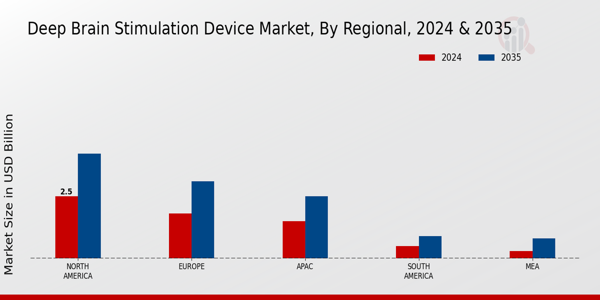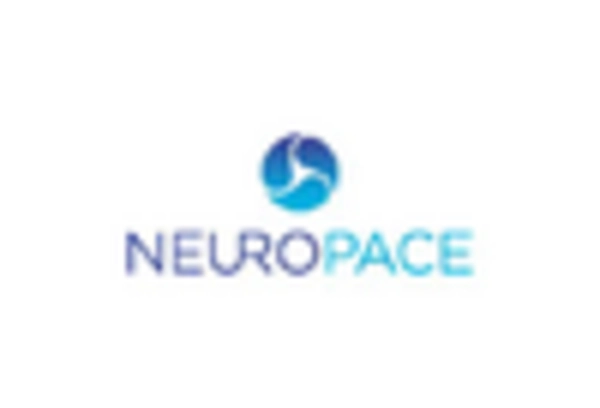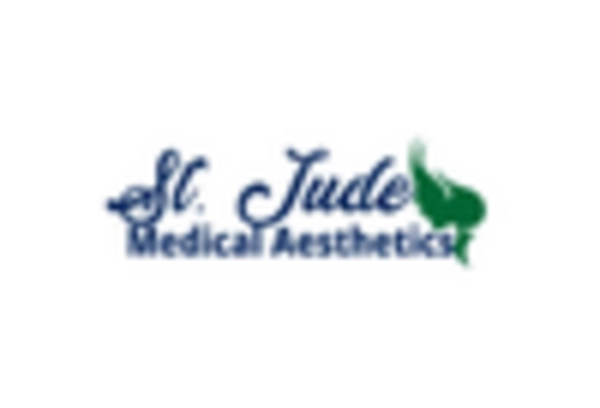Supportive Regulatory Environment
A supportive regulatory environment is fostering growth in the Deep Brain Stimulation Device Market. Regulatory bodies are increasingly recognizing the therapeutic potential of deep brain stimulation, leading to streamlined approval processes for new devices. This trend is encouraging manufacturers to invest in the development of innovative solutions that meet regulatory standards. The expedited approval of advanced devices not only enhances market accessibility but also stimulates competition among manufacturers. As a result, the market is likely to experience an influx of new products, catering to diverse patient needs and preferences. This regulatory support is crucial for sustaining momentum in the industry.
Technological Innovations in Device Design
Technological advancements in the design and functionality of deep brain stimulation devices are transforming the Deep Brain Stimulation Device Market. Innovations such as miniaturization, wireless connectivity, and improved battery life are enhancing the usability and effectiveness of these devices. For instance, the introduction of adaptive stimulation algorithms allows for personalized treatment, optimizing patient outcomes. The market is witnessing a shift towards more sophisticated devices that can be tailored to individual patient needs, which is likely to attract a broader patient base. As manufacturers continue to invest in research and development, the competitive landscape is expected to evolve, fostering further innovation and growth in the industry.
Rising Prevalence of Neurological Disorders
The increasing incidence of neurological disorders such as Parkinson's disease, essential tremor, and dystonia is a primary driver for the Deep Brain Stimulation Device Market. According to recent estimates, the prevalence of Parkinson's disease is projected to rise significantly, affecting millions worldwide. This surge in cases necessitates effective treatment options, with deep brain stimulation emerging as a viable solution. The market is expected to witness substantial growth, driven by the demand for innovative therapies that enhance the quality of life for patients. As healthcare providers seek to address the growing burden of these disorders, investments in deep brain stimulation technologies are likely to increase, further propelling the market forward.
Increasing Investment in Neuroscience Research
The rising investment in neuroscience research is a significant driver for the Deep Brain Stimulation Device Market. Governments and private organizations are allocating substantial funds to explore the underlying mechanisms of neurological disorders and the efficacy of neuromodulation therapies. This influx of research funding is likely to lead to breakthroughs in deep brain stimulation techniques and applications, expanding the market's potential. As new findings emerge, they may pave the way for innovative device designs and treatment protocols, further enhancing the appeal of deep brain stimulation. The synergy between research and market development is expected to create a dynamic environment for growth in the industry.
Growing Awareness and Acceptance of Neuromodulation Therapies
There is a notable increase in awareness and acceptance of neuromodulation therapies, including deep brain stimulation, within the medical community and among patients. This trend is significantly influencing the Deep Brain Stimulation Device Market. Educational initiatives and advocacy efforts are helping to demystify these treatments, leading to greater patient engagement and willingness to explore advanced therapeutic options. As more healthcare professionals recognize the benefits of deep brain stimulation for managing chronic neurological conditions, the demand for these devices is likely to rise. This growing acceptance is expected to drive market expansion, as patients seek effective alternatives to traditional pharmacological treatments.


















Leave a Comment